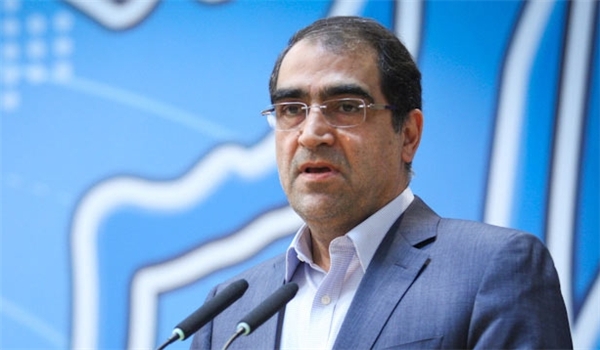 Birjand, S. Khorasan Prov. Dec 25, IRNA � Cancerous diseases� prevalence statistics in Iran are lower than that of advanced countries, but life expectancy in those countries is still higher than our country�s, health, remedy, and medical training minister said here on Wednesday.
Birjand, S. Khorasan Prov. Dec 25, IRNA � Cancerous diseases� prevalence statistics in Iran are lower than that of advanced countries, but life expectancy in those countries is still higher than our country�s, health, remedy, and medical training minister said here on Wednesday.���Statistics on death from cancer and diabetics in Iranian artists and athletes has been relatively high, but this does not mean high human loss due to such disease in the country,� said Seyyed Hassan Hashemi Wednesday night while visiting a comprehensive special diseases health center in Birjand.
He said that the status of providing facilities to cure special patients in the country is improving compared with the past, but still not quite satisfactory.
A major part of remedy for the special patients is providing medicine, in which Iran has achieved noticeable progress, having managed to produce some medicines in the country at lower cost than the imported drugs, he said.
Iranian Deputy Minister of Cooperative, Labor and Social Welfare Abolhassan Firouzabadi said last week that Iran's life expectancy has increased to 72 from 55, reiterating that the pace of public health and longevity is higher than the global average.
Life expectancy in Iran has increased to 72 years from 56 years after the Islamic Revolution in 1979.
Factors such as health care for the elderly, child mortality rate, and death due to accidents are considered as other factors related to life expectancy.
WHO European Health Report 2012 showed the average age of the 900 million people across the surveyed 53 countries to be 76 years. It, however, reported great variations between the countries regarding the average ages, which reached 17 years in men and 12 in women.
The report went on to say that the current financial crisis and potential cuts of health budgets could jeopardize the achieved growth.
'A scenario threatening the European region�s overall sustained gains in life expectancy may occur if economic or social crises are coupled with reductions in spending on health and other services,' said the UN report.
'There are persistent and widespread inequities in health across the region, which in some cases are worsening,' said Zsuzsanna Jakab, the WHO's regional director for Europe.
In addition, the co-author of the report, Ritu Sadana said, �what's very important...is that national averages continue to show a huge inequality across the region - particularly an east-west divide.�
According to the WHO report, the average life expectancy was 80 years for women compared to 72.5 years for men, adding that the difference was due to 'lifestyle and occupational differences,' including the fact that European men smoke twice as much as women.
'Men are lagging behind women in life expectancy by an entire generation,' said Sadana, adding, 'In 2010 men had not yet reached the average women enjoyed in 1980.'
The WHO report said despite the fact that Europe has the highest rates of drinking and smoking in the world, the region holds nine of the 10 countries with the highest life expectancy.
Moreover, the study revealed that the suicide rate among Europeans has declined since the mid-1990s; however, the rate has slowed since 2008 when the economic crisis began.
Looking into the future for the European region, the organization warned that it will face challenges for its health services, as more than 25 percent of its population will be older than 65 by 2050.
The surveyed 53 countries covered by the WHO report included all of Europe and Central Asia.
By IRNA
The Iran Project is not responsible for the content of quoted articles.










